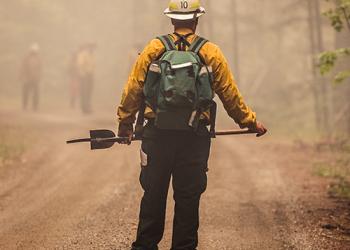Fire
Fire Management
The Forest Service has been managing wildland fire on National Forests and Grasslands for more than 100 years. But the Forest Service doesn't-and can't- do it alone. Instead, the agency works closely with other federal, tribal, state, and local partners.
At just over 3 million acres, the Caribou-Targhee National Forest has a robust fire program. Operating out of four different zones (North, South Fork, Portneuf and Bear River), engines, aviation and hand crews are strategically based to provide rapid and effective fire response. Wildland fire can be a friend and a foe. In the right place at the right time, wildland fire can create many environmental benefits, such as reducing grass, brush and trees that can fuel large and severe wildfires and improving wildlife habitat. In the wrong place at the wrong time, wildfires can wreak havoc, threatening lives, homes, communities and natural and cultural resources.
We have seen a profound change in the wildland fire management environment over the past few decades. Longer fire seasons, more extreme fire behavior, larger fires, more acres burned on average each year and wildfire suppression operations in the wildland urban interface (WUI) have become the norm.
To address these challenges, the Forest Service and its partners have developed and are implementing a National Cohesive Wildland Fire Management Strategy that has three key components: resilient landscapes, fire adapted communities, and safe and effective wildfire response.
Fuels Management
Fuel treatments, specifically prescribed fire and mechanical cutting are key management techniques that can protect areas of high value, such as homes within the wildland urban interface, and restore important ecological processes. Further, reduction of fuels improves the resilience of forests and rangelands to wildfire, insect outbreaks, plant invasions, and other disturbances.
Join the Fight, Forge Lifelong Bonds

Wildland firefighting is more than a job—it’s a calling. Our firefighters protect vast wilderness, save animals and homes, and stand as the first line of defense against wildfires threatening lives and landscapes. It’s grueling work, but it’s also a chance to join a tight-knit brotherhood and sisterhood, forge friendships that last a lifetime, and make a real difference. Ready to step up? Follow the link below to learn how to become a wildland firefighter, the roles you can take on, and what it’s like to be part of this incredible crew.



